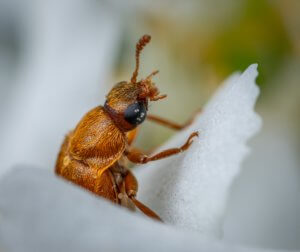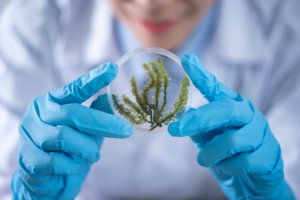Awesome science news from the web (24/08)
Once again, we bring you awesome science news from the web; with tips on how to talk about these topics with kids – questions to ask and discussions to have.
“As an educator, it’s my duty to empower you to think. So that you can go forth and think accurate thoughts about how the world is put together.”
-Neil DeGrasse Tyson
1. ‘STEVE’-y wonder is one of a kind
 Researchers have confirmed that the newly discovered celestial phenomenon STEVE (Strong Thermal Emission Velocity Enhancement) is different from traditional auroras. Auroras occur when the green light is produced by trapped charged ionic particles in the Earth’s magnetic field hitting oxygen in the atmosphere. STEVE is a similar band of purple and white light that can be seen in the night sky. Researchers looked to see if STEVE occurred during a large increase in atmospheric charged particles like auroras but found that it didn’t. Link to story
Researchers have confirmed that the newly discovered celestial phenomenon STEVE (Strong Thermal Emission Velocity Enhancement) is different from traditional auroras. Auroras occur when the green light is produced by trapped charged ionic particles in the Earth’s magnetic field hitting oxygen in the atmosphere. STEVE is a similar band of purple and white light that can be seen in the night sky. Researchers looked to see if STEVE occurred during a large increase in atmospheric charged particles like auroras but found that it didn’t. Link to story
| Sharing with kids: Early this year, a new type of beautiful night sky event was discovered. Scientists called it STEVE (Strong Thermal Emission Velocity Enhancement). STEVE looks like a bright band of purple and white light, compared to auroras (the northern or southern lights), which are green. Auroras are seen close to the North or South Pole; STEVE is seen further away from the Poles.
Questions to Ask: How are auroras made? Scientists wanted to know if STEVE is made in a different way to auroras. How could you test whether STEVE is different from auroras? Suggested Answer: Auroras are made when charged particles trapped by the Earth’s magnetic field hit oxygen molecules in the atmosphere. This collision gives off energy in the form of green light. You could test whether STEVE is made in a different way to auroras. Evidence that they are the same would be if, like auroras, there is a large increase in charged particles in the atmosphere whenever STEVE happens. Scientists didn’t see this happen – therefore they agreed that STEVE is not the same as an aurora! |
2. Meet “Denny”: half Neanderthal, half Denisovan, pure awesome
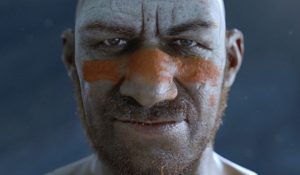 Paleogeneticists have concluded that a bone found in a Siberian cave is from a 13-year-old girl whose mother was a Neanderthal and father was Denisovan. This is a landmark discovery of the first-generation mix of two extinct hominins (human-like) species. Neanderthal remains have been found mainly in Eurasia, whereas Denisovan remains have only been found in their namesake Denisova cave in Siberia. Link to the story
Paleogeneticists have concluded that a bone found in a Siberian cave is from a 13-year-old girl whose mother was a Neanderthal and father was Denisovan. This is a landmark discovery of the first-generation mix of two extinct hominins (human-like) species. Neanderthal remains have been found mainly in Eurasia, whereas Denisovan remains have only been found in their namesake Denisova cave in Siberia. Link to the story|
Sharing with kids: Did you know that other human-like species existed a long time ago but died out? The modern human species called Homo Sapiens is the only one left. Paleogeneticists (scientists that look at the genes of fossil remains) investigated the genome (the entire set of genes) of a bone found in Russia. They found that it belonged to a 13-year-old girl, whose mum was a Neanderthal (one type of extinct human-like species) and dad was a Denisovan (another type). Questions to Ask: Do you know of any animals that are hybrids or mixes of species (a type of animal)? Why are species hybrids rare? Suggested Answer: Mule (female horse x male donkey), liger (female tiger x male lion), pizzly (polar bear x grizzly bear). All hybrids are from species that are closely related together (part of the same Genus – larger family). Each type of animal often has a unique number of chromosomes (the things that carry our genes). E.g. donkeys have 62, horses have 64. It is difficult to mix two animals with a different number of chromosomes. If they do happen to make children (hybrids), the children are often not able to have children of their own. |
3. Microchips have employees swiping left on credit and ID cards
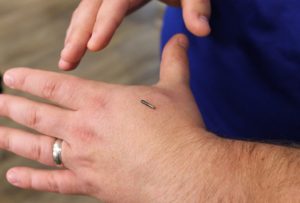 US company Three Square Market employees are reaping the benefits of microchips voluntarily embedded in their hands. They love the convenience of using the microchips to swipe into the office, buy food and drinks from the cafe/vending machines, and log onto computers. Basic medical information about the user is also stored. The microchips, which are the size of a rice grain, store information electronically. They rely on radio frequency waves sent from microchip readers to for energy when passing on the information. Link to the story
US company Three Square Market employees are reaping the benefits of microchips voluntarily embedded in their hands. They love the convenience of using the microchips to swipe into the office, buy food and drinks from the cafe/vending machines, and log onto computers. Basic medical information about the user is also stored. The microchips, which are the size of a rice grain, store information electronically. They rely on radio frequency waves sent from microchip readers to for energy when passing on the information. Link to the story
|
Sharing with kids: Instead of using swipe cards to get into buildings, credit cards to pay for things, or remembering passwords for computers, people working at a US company volunteered to have a microchip injected into their hands that do all these functions instead. The microchip stores information electronically and is only very small – the size of a rice grain. It also stores the person’s basic medical information e.g. if they have a heart condition. The microchip relies on radiofrequency waves from the microchip reader to give it the energy to send information. Questions to Ask: What do you think is the advantage of using these microchips? What do you think might be some downsides to using them? Would you like one being put into your hand? Suggested Answer: These questions are designed to get kids to put their thinking caps on! Some answers might be: advantages – saves time, saves plastic card waste, one-day medical information can easily be read during a medical emergency. Disadvantages – privacy issues, don’t know if there are any long term side effects of having them inside your body, might accidentally move to another part of the body. There’s no right or wrong answer to the last question. |
4. Plant diversity is key for bee-ing productive
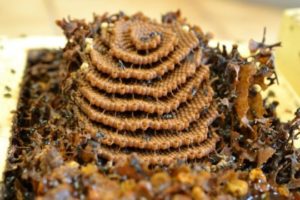 Evidence from German and Aussie scientists suggests declining bee numbers is related to a lack of diversity in plants available that provide quality food resources. In the study, bee colonies were set up in different habitats. Bees thrived the most (produced more offspring and made more honey) in biodiverse forests and gardens and least in plantations where only macadamias were grown. But if small ‘habitat islands’ with a range of plants were within flight reach of plantations, bees can once again thrive. Link to the story
Evidence from German and Aussie scientists suggests declining bee numbers is related to a lack of diversity in plants available that provide quality food resources. In the study, bee colonies were set up in different habitats. Bees thrived the most (produced more offspring and made more honey) in biodiverse forests and gardens and least in plantations where only macadamias were grown. But if small ‘habitat islands’ with a range of plants were within flight reach of plantations, bees can once again thrive. Link to the story
|
Sharing with kids: The number of bees worldwide that are dying is increasing and this fact is pretty scary. Scientists are doing studies to try and find out why that is. Questions to Ask: What role do bees have and how does it impact us, humans? Suggested Answer: Bees play a huge role in the pollination of plants. Pollination is the transfer of pollen from the male part of a plant, to the female part so that it can be fertilised and make seeds for new plants. Bees pollinate 70 of the 100 types of plant crops that feed most of the world’s population. If bees die, we wouldn’t be able to grow the plant crops that we eat and use e.g. certain vegies, fruits, and cotton. We also wouldn’t have a lot of the flowers that we know and love, like sunflowers! |
5. Nerve-wracking wait for gene silencing therapy over
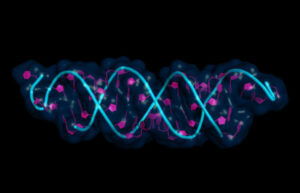 The US FDA agency has approved a Nobel-prize winning gene silencing therapy for the treatment of inherited nerve disease. Unlike the gene-cutting technology CRISPR, the drug patisiran does not directly edit mutated genes. It targets messenger RNA, the genetic messenger that carries instructions from DNA to produce proteins. Patisiran runs ‘interference’ (called “RNAi’) and hijacks messenger RNA, effectively stopping the wrong proteins from being made. Link to the story
The US FDA agency has approved a Nobel-prize winning gene silencing therapy for the treatment of inherited nerve disease. Unlike the gene-cutting technology CRISPR, the drug patisiran does not directly edit mutated genes. It targets messenger RNA, the genetic messenger that carries instructions from DNA to produce proteins. Patisiran runs ‘interference’ (called “RNAi’) and hijacks messenger RNA, effectively stopping the wrong proteins from being made. Link to the story
|
Sharing with kids: The US government approved a new medicine or good ‘drug’ to treat an inherited disease. Genes, which we inherit from our parents, contain instructions to make proteins that carry out the body’s functions. Messenger RNA acts as a messenger between genes and our cells’ protein-making factories. The new drug works by stopping the messenger RNA that would usually allow mutated or damaged genes to make the wrong proteins. The technology behind the drug was discovered 20 years ago. Questions to ask: Why is it important to do proper tests, in animals and humans, before the government allows a new drug to be sold to patients? Suggested Answer: To make sure that the drug will work properly i.e. do what it claims to do and that it doesn’t cause unwanted serious side effects. The first tests are usually done with a small number of participants. It takes time to conduct tests (‘clinical trials’) of several people over a long enough time to safely say the drug works properly. |
Further reading: our last week’s science news from the web and our blog on the importance of science literacy.
Did you like what you read? Want more science delivered in fun ways? Follow us on different social media channels using the links below.
Better yet, subscribe to InquiBox to get different science mini-projects delivered home.




